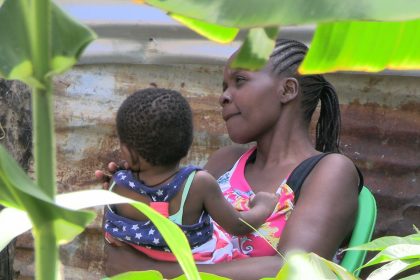Overcrowding has led to stampede fatalities besides hospitalisations after diarrhoeal outbreaks. But Primary Schools with over 5000 students supposedly…have space for more.
Every morning, 5,600 students walk into Olympic Primary School, cramming into classrooms of up to 90 students each. Despite this massive population, the headteacher still has space for one more.
“Get the form from the secretary,” he said as he hurriedly left his office when this reporter asked for a vacancy for a grade two pupil.
“You will bring his birth certificate, a copy of your ID and attach this form. Bring him in full school uniform and pay a registration fee of 3,500,” said the secretary. “When will he come?” she posed.
Olympic Primary School sits in Kibra, one of Nairobi’s largest informal settlements, squeezed between NGO offices, churches, homes and shops. The school once owned over 10 acres, but much of this land has been grabbed. Now it builds upward, constructing multi-storey buildings to house the growing number of students.
Mildred Achieng, a resident of Karanja area in Kibra and mother of three children, two of whom attend Olympic Primary School, told Willow Health Media that Olympic Primary has far too many students. “In Grade 9, for instance, they have nine streams and, in each stream, they have over 100 students,” said Achieng, adding that the high student population strains the school’s infrastructure.

Nairobi’s Mwiki Primary School has 4,600 students with vacancy for more
Studies on the impact of improved water, sanitation and hygiene in Kenyan schools published in the 2014 Journal of American Public Health showed that they led to decreased cases of diarrhoea and clinic visits. The opposite was the case when overcrowding was worsened by strained sanitation infrastructure, as it could “lead to high rates of disease transmission, such as tuberculosis and pneumonia.”
The situation isn’t unique to Olympic Primary. At Mwiki Primary School, another public school in Nairobi County with 4,600 students, they, too, are building a new two-storey structure. Like Olympic, Mwiki had a vacancy for one more student … both schools following the government directive not to turn anyone away.
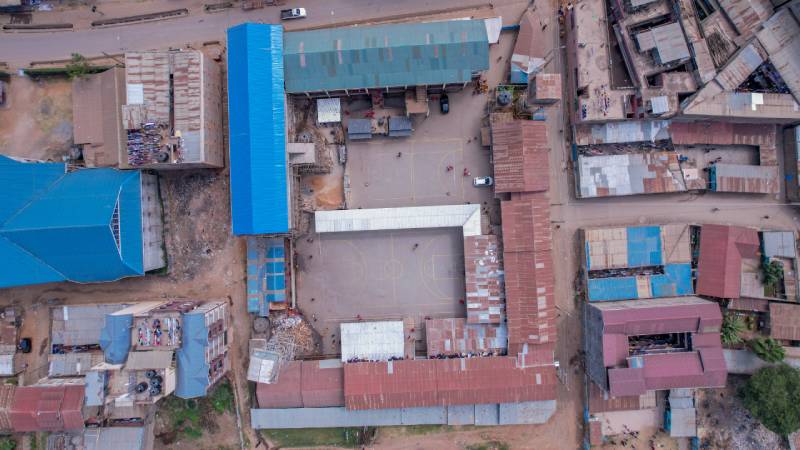
Overcrowding creates serious health risks. Poor toilet-to-student ratios make things worse, creating public health threats, including stampedes and the spread of diarrhoeal diseases like cholera. At Olympic Primary School, for instance, Achieng’s son’s Grade 9 class, which has 900 students, has only four toilets.
These dangers are real. In 2020, 14 students died in Kakamega Primary School following a stampede. In 2023, over 140 children in western Kenya were hospitalised following a diarrhoeal outbreak.
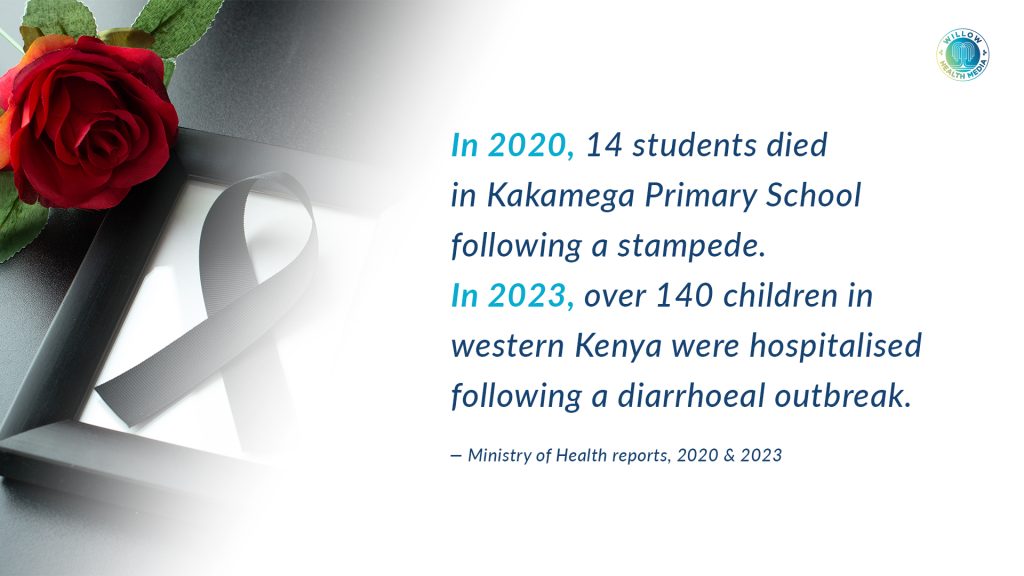
Kenya has solid policies governing school registration that address health issues. The Basic Education Act (2013) requires schools to have “suitable infrastructure and appropriate equipment” before registration.
For primary schools, a classroom should be eight by six metres, catering for 40 students
To register a school, applications go through the county education boards. “In every county, we have the County Education Board. You are supposed to fill in forms and submit them to the sub-county director. Once that file has been compiled, it is tabled to the County Education Board, which has the mandate of approving all the schools within the county,” said Johnstone Shisanya, an education expert who has worked with civil society and the Ministry of Education.
The law is clear about classroom standards. For primary schools, every child should have 1.2 square metres, and a classroom should be eight by six metres to cater for 40 students.
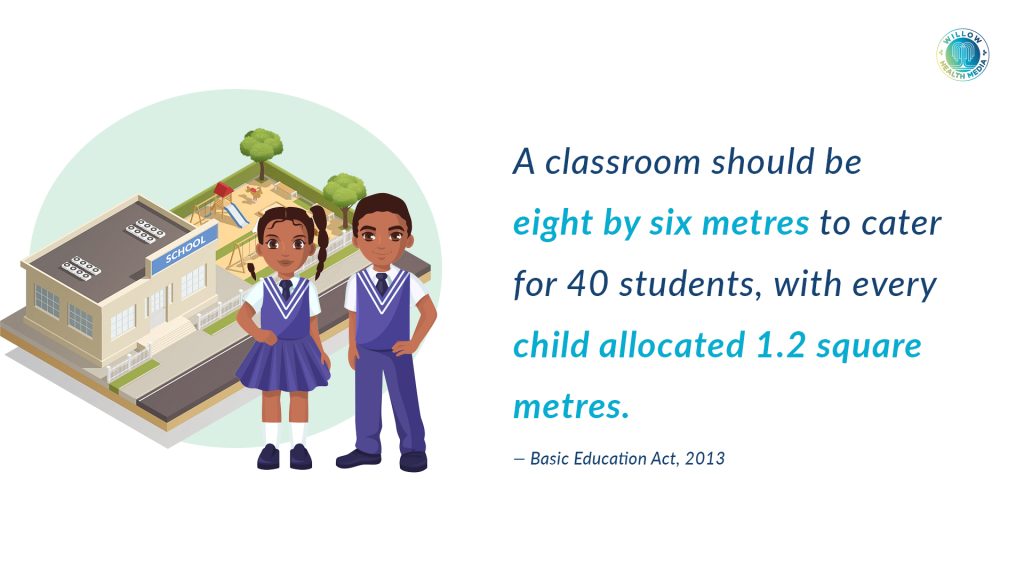
Lewis Karanja, a child psychologist, argues that overcrowding in schools has an impact on a child’s mental health as “you are putting a lot of pressure on a child” who is ideally “supposed to thrive in a safe space where they can share, be able to laugh and play as a child.”
Assorted research validates his views, arguing that overcrowding results in competition for attention, resources, and play space, besides “overcrowded classrooms reduce individualised instruction and create greater distractions and disciplinary issues, affecting both teachers’ ability to teach effectively and students’ ability to learn successfully,” according to a 2024 study by Walden University.
Karanja explains that the main issue with overcrowding, children “are not able to express themselves, they’re not able to be who they want to be” and studies by Nigerian researcher King-Agboto and others published in the 2023 Journal of Education in Developing Areas notes that “noise and lack of space in overcrowded classrooms makes it difficult for students to concentrate on lessons” resulting in absenteeism and high dropout rates.
Good ventilation ensures classrooms ‘don’t remain stuffy and students actually concentrate’
Prof Samson Gunga from the University of Nairobi explains that proper space and ventilation are crucial for the competency-based education (CBE), which demands that classrooms “must be spacious and well-ventilated to allow for free movement, to allow for group activities, because that is what CBE is about.”
Good ventilation ensures classrooms “don’t remain stuffy and students actually concentrate and would not be fatigued in an environment that is not appropriate for young learners.”
During school registration, public health officers should inspect facilities. “Do you have water? Is the water safe for drinking? Do you have latrines? Are they placed in the right place? Maybe you have placed pit latrines or toilets next to the kitchen. What are the health hazards of that?” said Shisanya.
The recommended toilet-to-student ratio is 1 to 30 for boys and 1 to 25 for girls. The Kenya School Health Policy covers nine themes, including water, hygiene, sanitation, disease prevention and school infrastructure.
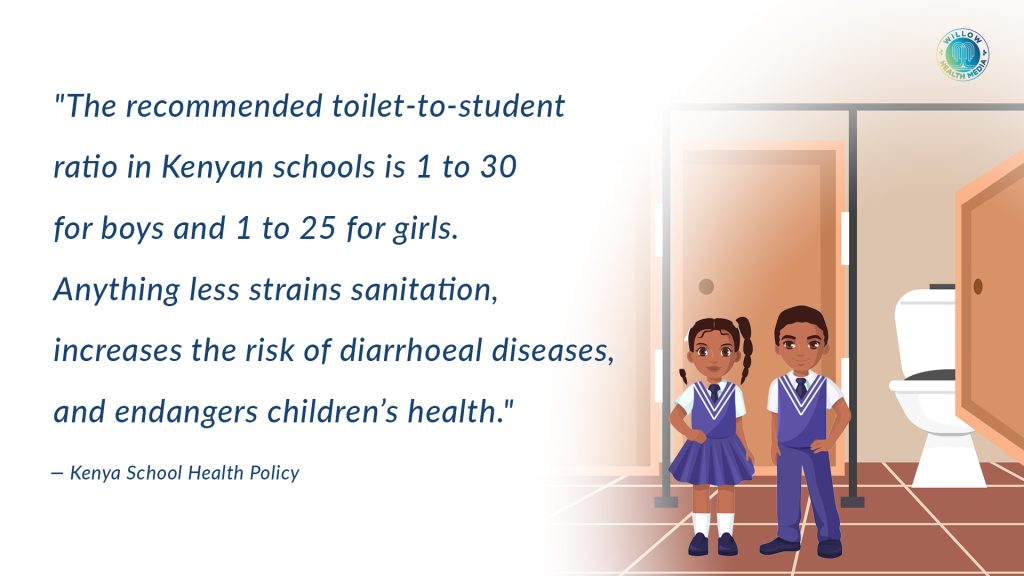
Schools should be assessed every three years by Quality Assurance Officers to ensure they follow policy guidelines. The government’s commitment to leaving no child behind means schools are registered and encouraged to enrol students despite lacking proper facilities.
“So that’s how the overcrowding issue comes where we have a classroom with 100 plus learners who are supposed to be managed by the same teacher in 35 minutes for a lesson,” said Shisanya.
Several factors fuel this crisis:
Inadequate Funding: Prof Gunga says capitation funding isn’t enough to provide for all students throughout the year. Only about 20 per cent of the education budget goes to infrastructure, according to Shisanya. “The rest is recurrent expenditure, which goes to the teachers. So, we leave the infrastructure where it was 10, 20 years ago, but the number is growing every year,” he said.
Insufficient Oversight: There aren’t enough quality assurance officers to cover all schools. Regular assessments that should happen every three years often do not occur.
Poor School Management: Some school management boards lack the capacity to follow policies. “There are institutions which have a high population, but they are able to manage in terms of capacity building, where they inform the learners on what needs to be done in times of emergency, and they try to put mechanisms in place. Other schools, you realise, have nothing. They do not understand all the policies,” Shisanya explained.
Since Kenya introduced free basic education in 2003 and free secondary schooling from 2008, demand has skyrocketed, leading to overcrowding and overstretched resources in public schools. Despite the Kenyan government prioritising education, Kenyan public education is rife with inadequate facilities, insufficient and often poorly trained teachers, especially in overcrowded classrooms and poor results. The teacher deficit stands at over 100,000, according to an assessment by Zizi Afrique Foundation and Usawa Agenda.
Almost 1.13 million children of primary school age (six to 13 years old) are out of school in Kenya, according to an Out-of-School Children Initiative study conducted in Kenya in 2020. The situation was worsened due to COVID-19 school closures and drought conditions.
Overcrowding represents a dangerous contradiction: while Kenya works to get more children into school, the conditions they find there threaten their health and undermine their education. Without significant investment in infrastructure and enforcement of existing policies, these schools will continue to pose serious risks to the very children they are meant to serve.


















